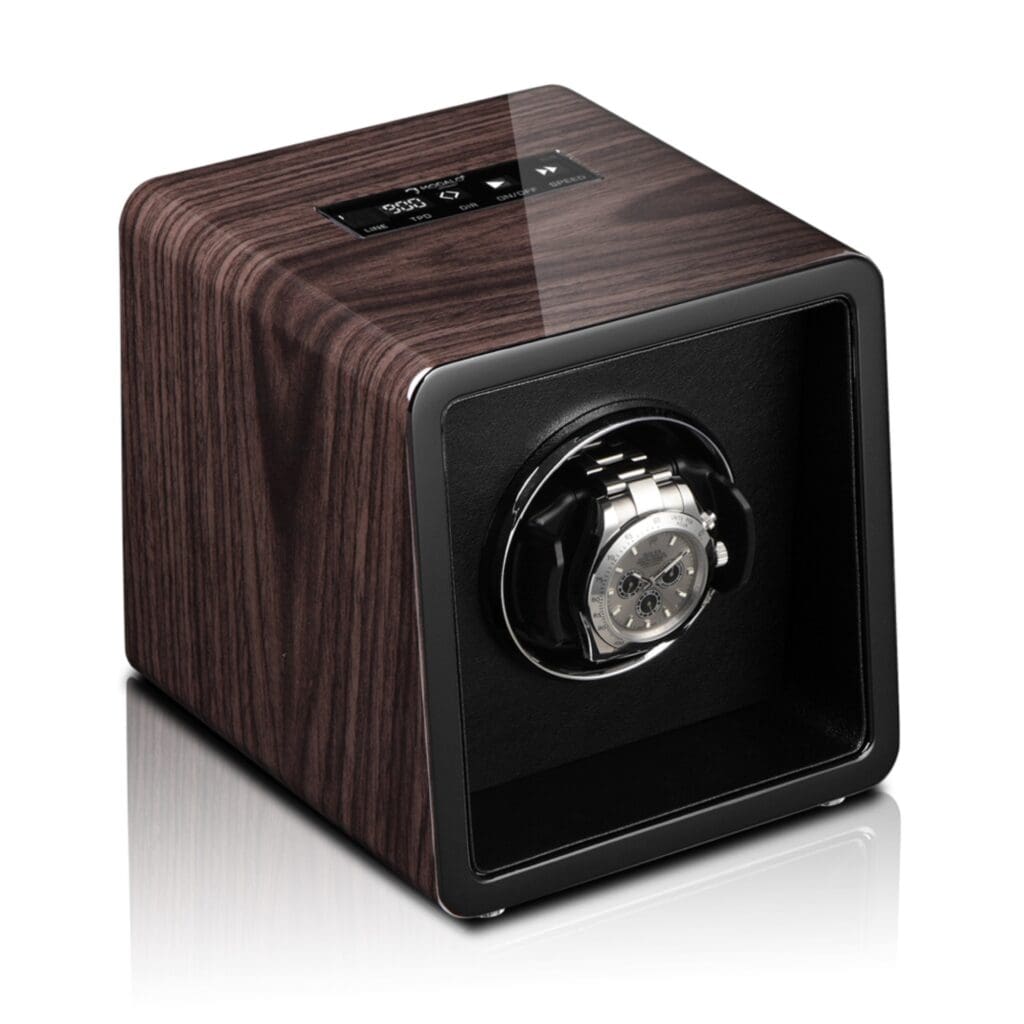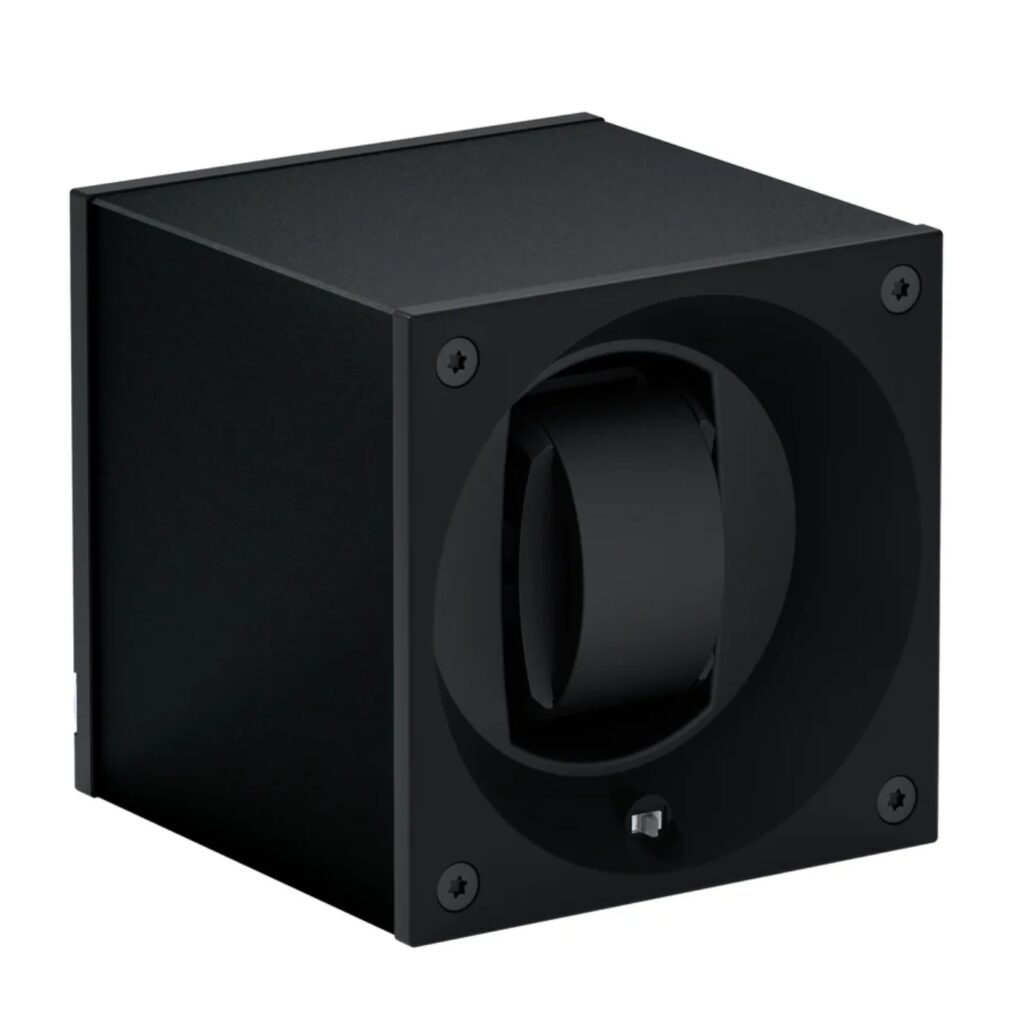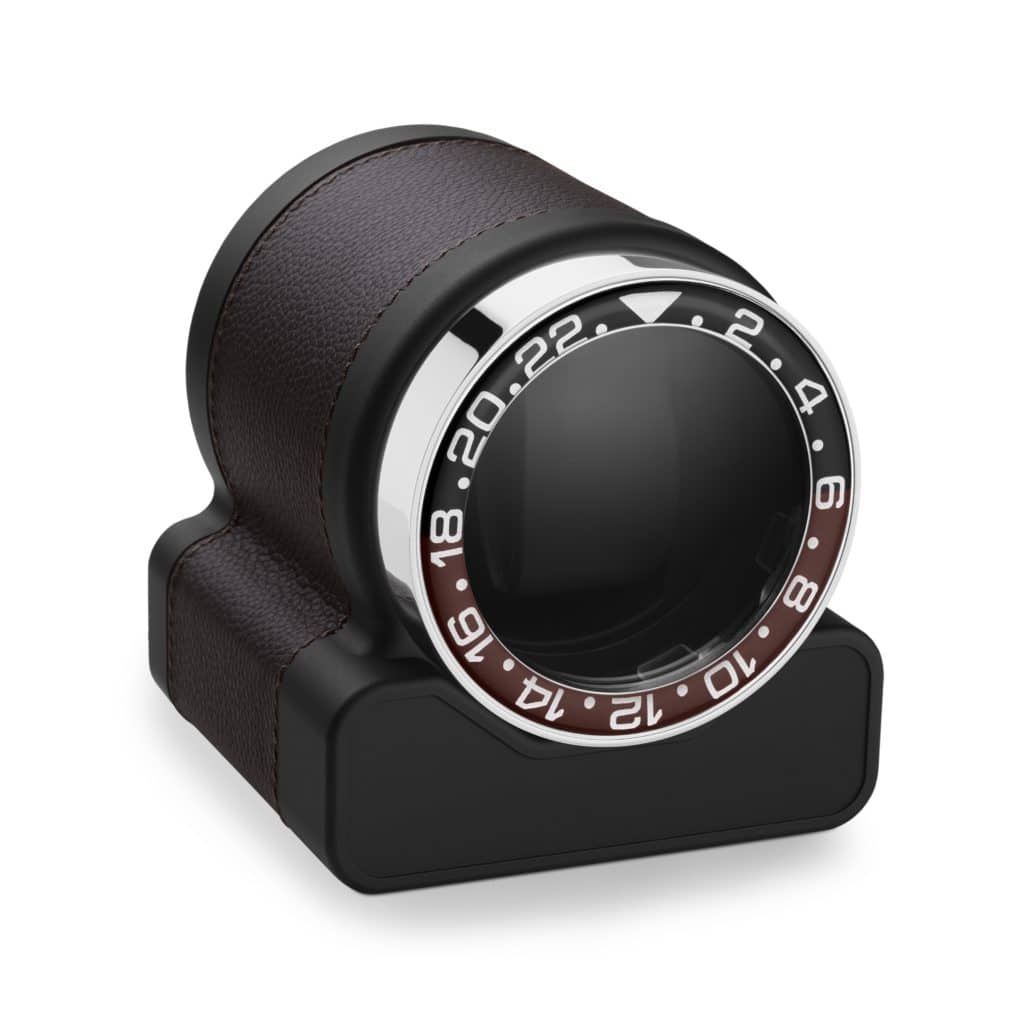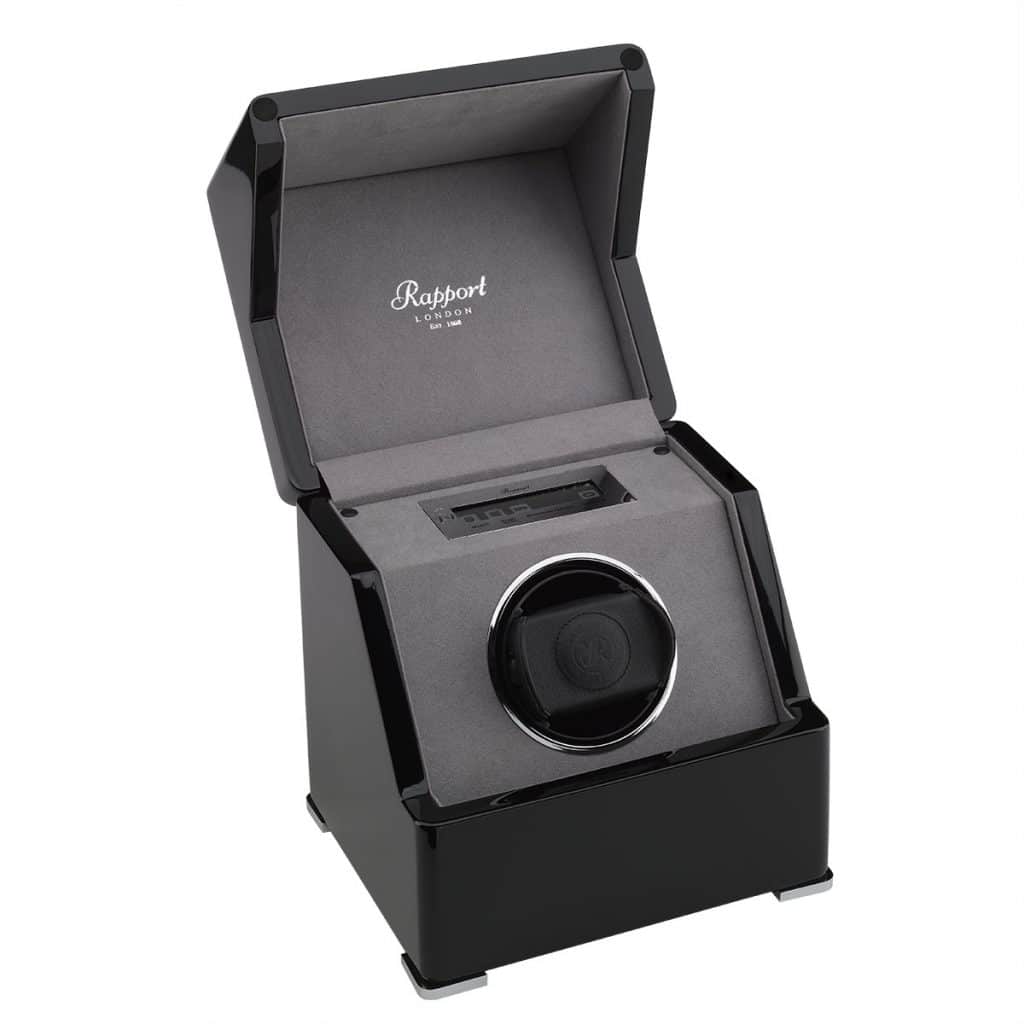How does a watch winder work?
The purpose and operation of a watch winder is very simple and uncomplicated. But first it is worth understanding how your automatic watch is powered.
Inside your watch
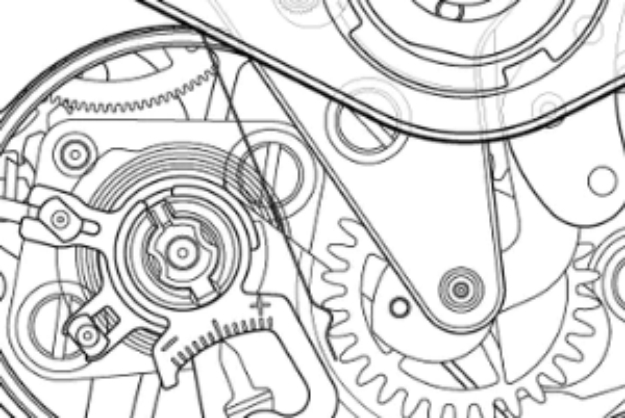
Briefly and perhaps crudely; inside your watch is a spiral torsion spring (mainspring) that slowly uncoils. This releases its stored energy, which in turn powers the gears to keep your watch running. Normally you would manually charge the mainspring by wearing the watch. The movement of your wrist turns a rotor that charges the spring, or manually winding by using the winding crown.
Some rotors charge the spring when turning in both directions (bi-directionally), some only in clockwise (CW) or counterclockwise (CCW). Most automatic watches have a power reserve of between 36 and 72 hours, some much more than this. When your watch isn’t being worn there is no recharging of the mainspring. Once the power reserve is depleted, the watch will stop.
What Are Turns Per Day (TPD)?
Automatic watches have a minimum required amount of energy to keep the movement powered. In the watch winder world this is quantified as ‘tpd’ (turns per day). Generally the majority of watches need between 650tpd and 800tpd bi-directionally with some slightly higher or lower.
Watch winders usually have a number of settings or programs to choose from to suit your watch. It should be noted that it is not a problem if you are over the required amount. You cannot damage the watch as there is a release mechanism built into the movement. This disperses any excess energy with no detriment to the watch. You cannot over wind it.
To illustrate this in more simple terms… If you lead an active lifestyle, do you ever consider taking off your watch as you may over wind it? Or how many tpd do you generate through a normal day?! Nobody really knows as we are all different! The number is a guide, not a rule, it is the minimum recommended to prevent the watch stopping. Should you want to know the recommended amount of tpd for your watch or discover more about watch winders, then do get in touch.
What does a watch winder do?
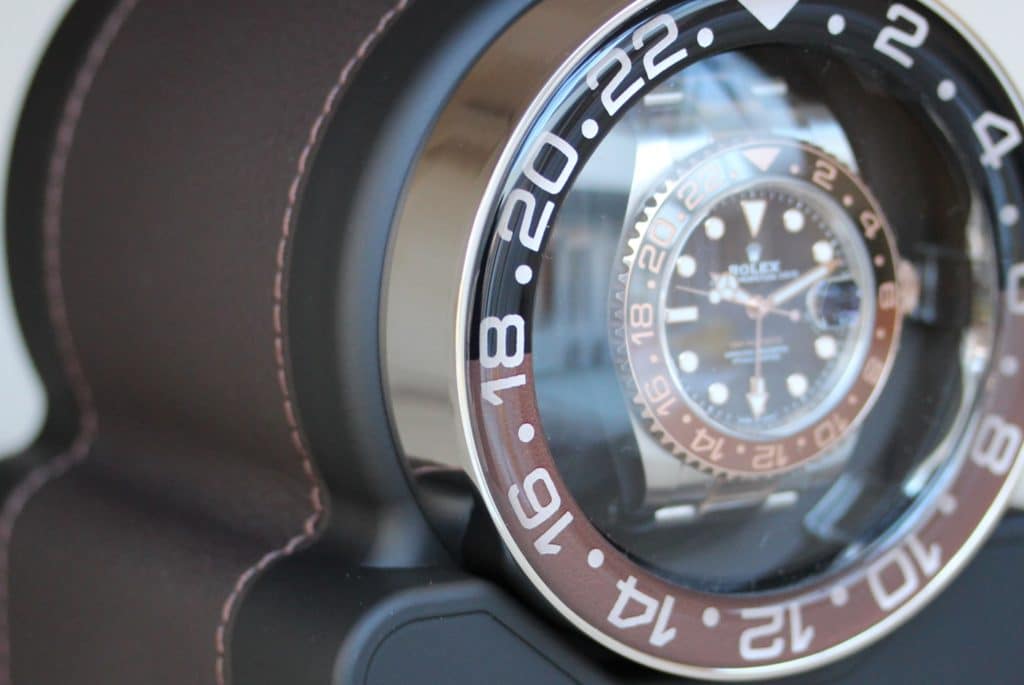
A watch winder is a mechanical unit that simulates wrist movement by rotating your watch when not being worn. This keeps the movement powered and the watch ready to go rather than having to reset it after a few days off. This can save a lot of time for watches with complications such as ‘day-date’ and ‘moon-phase’. But that isn’t the winders’ only use!
Our watch winders come in a range of materials, styles and sizes to suit all tastes also making them a presentation case too! Watch winders are unobtrusive and operate almost silently. Once the desired program has been selected, the winder will work periodically over a 24h period to complete the required tpd. You may not ever see it working as it might do 20 turns, then rest for 20 minutes or so, then another 20 turns and then rest, repeating the process until the desired amount of tpd has been carried out over the 24h period. Don’t worry if you don’t see your watch winder operating – it is doing it’s job correctly.
We don’t just cater for single watches either! Should you have a growing collection of automatic watches then we stock a wide range of multi head watch winders that can cater for 2 up to 12 watches (and more on a bespoke level) with each head having the option of being independently programmed.
If you still have any queries about the 1010 Boutique range of Watch Winders and which one should be the best option for you, don’t hesitate to contact us!
A selection of our watch winders
-
Modalo Saturn Single Watch Winder – Macassar
£350.00
Availability: In Stock - Ready To Ship
-
Swiss Kubik Masterbox – Black Aluminium
£720.00 – £800.00
Availability: Usually Ships Within 7-10 Working Days
-
Scatola Del Tempo Rotor One Chocolate Leather Strap
£585.00
Availability: In Stock - Ready To Ship
-
Rapport Perpetua III Single Watch Winder Touch Screen – Black
£625.00
Availability: In Stock - Ready To Ship

